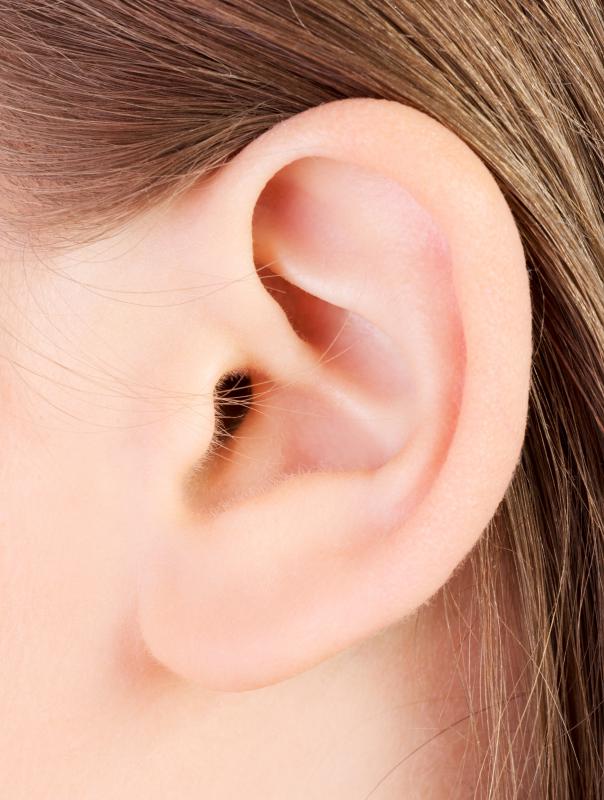At WiseGEEK, we're committed to delivering accurate, trustworthy information. Our expert-authored content is rigorously fact-checked and sourced from credible authorities. Discover how we uphold the highest standards in providing you with reliable knowledge.
What is the Vestibulocochlear Nerve?
The vestibulocochlear nerve is a sensory nerve that conducts auditory and vestibular information from the inner ear to the brain. Auditory functions manage hearing, while vestibular functions serve to maintain balance and awareness of the body's position. This nerve supplies purely sensory information and is the eighth cranial nerve. All 12 cranial nerves arise from the brain stem, an area near the base of the brain just above the spinal cord, and travel out to supply movement and sensation to the face and neck.
Once referred to as the auditory or acoustic nerve, the vestibulocochlear nerve begins in the medulla oblongata, or the lower portion of the brain stem. It then travels alongside the facial nerve and enters the inner ear through the internal acoustic meatus, a hole in the temporal bone of the skull. Here, it splits into the cochlear and vestibular nerves, which deliver hearing and balance signals, respectively.

The cochlear nerve extends into the cochlea, a snail shaped, bony tube in the inner ear that is responsible for hearing. Sound vibrations from the outside world enter the ear and are transmitted through the fluid in the tubing of the cochlea. When these physical vibrations reach the Organ of Corti in the cochlea, the vibrations bump into hair cells, which are small, ciliated projections. The hair cells both amplify the strength of the vibrations and convert them from physical movement to electrical impulses. The impulses are then transmitted to the spiral ganglion, a group of nerve cells emerging from the cochlear nerve, and then passed back through the vestibulocochlear nerve to the brain, where the sound is processed.

The vestibular branch of the nerve travels towards the semicircular canals, which combine with the cochlea to form the labyrinth of the inner ear. The semicircular canals are a set of three loopy tubes that register the position of the body by monitoring the motion of fluid inside them. The vestibular nerve receives sensory information from the semicircular canals via the Scarpa’s ganglion, a cluster of nerve cells emerging from the end of the nerve. This positional information is then carried to the brain, which can process the information and help the body achieve balance.

If the vestibulocochlear nerve is damaged, a patient might experience hearing loss, nausea, severe dizziness, difficulty maintaining balance, and ringing in the ear. Vestibular neuritis occurs when there is a viral infection of the vestibular branch of the nerve, and vestibular neuronitis refers to an infection of the cells in Scarpa’s ganglion. It is not clear to scientists where these infections typically begin — in the nerves or ganglia — or which virus is normally the culprit. Some researchers have proposed that the virus usually belongs to the herpes family or may be part of a systemic, or whole body, infection. If the cochlear nerve is also involved, it is termed labyrinthitis.
AS FEATURED ON:
AS FEATURED ON:














Discussion Comments
As a child develops and learns to walk, he or she is developing nerve functions which will become involuntary and almost automatic as time goes on. Learning to walk is not merely about learning to put one leg in front of the other, but is an intricate interaction of balance, position, and proper timing of movement. Learning to ride a bike and to drive also have a lot to do with this processing of function and kinesiology.
Believe it or not, humans have more than five senses. We have a sense for pain and pleasure, for deeper feelings, and for position. The vestibulocochlear nerve is in the ear but has nothing to do with hearing. It is a balancing nerve which aids in our sense of balance and position. This is one of the "deeper" sense which doesn't rely primarily on interactions with the outside world, but with our inner sense of poise and understanding.
Post your comments